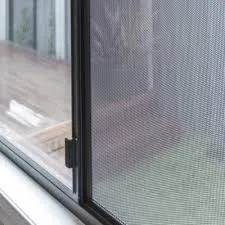-
+86 15030157877
-
sales@galvanizedmetalmesh.com
Des . 05, 2024 12:32 Back to list
Exploring the Versatility and Applications of Expanded Metal Mesh in Modern Design
Understanding Expanded Metal Versatility and Applications
Expanded metal is a unique and versatile material that has gained popularity in various industries due to its durability, strength, and aesthetic appeal. This form of metal is produced by shearing and stretching a solid sheet of metal, resulting in a mesh-like structure. The process involves cutting slits in the metal and then expanding it to create a series of diamond-shaped openings. This article delves into the characteristics, production process, benefits, and diverse applications of expanded metal.
Characteristics of Expanded Metal
One of the most notable features of expanded metal is its lightweight nature coupled with high strength. The open structure allows for air and light passage while offering excellent load-bearing capabilities. This property makes it suitable for various applications where ventilation and visibility are crucial. Additionally, expanded metal is resistant to corrosion, particularly when treated with protective coatings, making it an ideal choice for outdoor environments or areas exposed to moisture.
Expanded metal is available in various materials, including aluminum, steel, and stainless steel. Each material offers different advantages. For instance, aluminum expanded metal is lightweight and resistant to oxidation, making it perfect for architectural applications. In contrast, stainless steel expanded metal is typically used in environments requiring more strength and heat resistance, such as industrial settings.
Production Process
The production of expanded metal involves several steps. Initially, a solid sheet of metal is fed into a specialized machine equipped with a conveyor system and cutting tools. The machine makes precise cuts in the metal sheet, creating slits. After cutting, the sheet is then expanded, either mechanically or pneumatically, allowing the slits to open and form the characteristic diamond pattern.
The dimensions of the openings, thickness of the metal, and overall size of the panel can vary according to specific requirements. This flexibility in manufacturing allows for a wide range of designs and applications, further contributing to the popularity of expanded metal in various sectors.
Benefits of Expanded Metal
expanded metal

The advantages of expanded metal are numerous. Firstly, its lightweight yet robust structure makes it easy to handle and install. Secondly, the open design allows for excellent airflow and visibility, making it suitable for safety applications, such as protective barriers and security fences. Moreover, expanded metal offers aesthetic appeal; the unique patterns can enhance the visual aspects of architectural projects.
Another significant benefit is its cost-effectiveness. Compared to other materials that may serve similar purposes, expanded metal is often less expensive due to its efficient production process and minimal waste generation. This aspect is particularly appealing to industries seeking to reduce costs without compromising quality and performance.
Applications of Expanded Metal
The versatility of expanded metal translates into a myriad of applications across various sectors. In the construction and architectural industries, it is commonly used for facades, staircases, and balustrades. The open structure allows for designs that incorporate light and air while providing structural support.
In the industrial sector, expanded metal is widely utilized for machine guards, platforms, and safety barriers. Its ability to withstand heavy loads and resist corrosion makes it ideal for factories and warehouses where safety is paramount. Furthermore, its lightweight nature facilitates easy installation and maintenance.
Expanded metal also finds its place in landscaping and gardening. It can be used for trellises, fencing, and decorative panels, adding both functionality and aesthetic value to outdoor spaces. The diamond-shaped openings provide a unique visual element while allowing for growth and visibility.
In the automotive industry, expanded metal is used for grill covers, heat shields, and protective panels. Its lightweight and heat-resistant properties make it a valuable component in vehicle design.
Conclusion
In summary, expanded metal is a remarkable material that combines strength, versatility, and aesthetics. Its unique production process results in a lightweight yet durable product suitable for various applications in construction, industry, landscaping, and automotive sectors. As industries continue to seek efficient and cost-effective solutions, expanded metal is likely to remain an essential component in contemporary design and functionality. Its ability to blend practical benefits with visual appeal makes it a favored choice among architects, engineers, and designers alike.
-
High Quality 3D Curved Welded Wire Mesh Fence for Security and Aesthetics
NewsJul.25,2025
-
High-Quality Security Window Screen Mesh for Home & Office Protection
NewsJul.24,2025
-
Hexagonal Gabion for River Bank Protection and Retaining Walls
NewsJul.23,2025
-
High Quality Stainless Steel Wire Mesh Roll & Supplier Wholesale Price
NewsJul.22,2025
-
Hexagonal Gabion Mesh: Durable Stone Cages for Landscaping
NewsJul.22,2025
-
Premium Black Brick Welded Mesh - High Strength & Corrosion Resistant
NewsJul.21,2025



